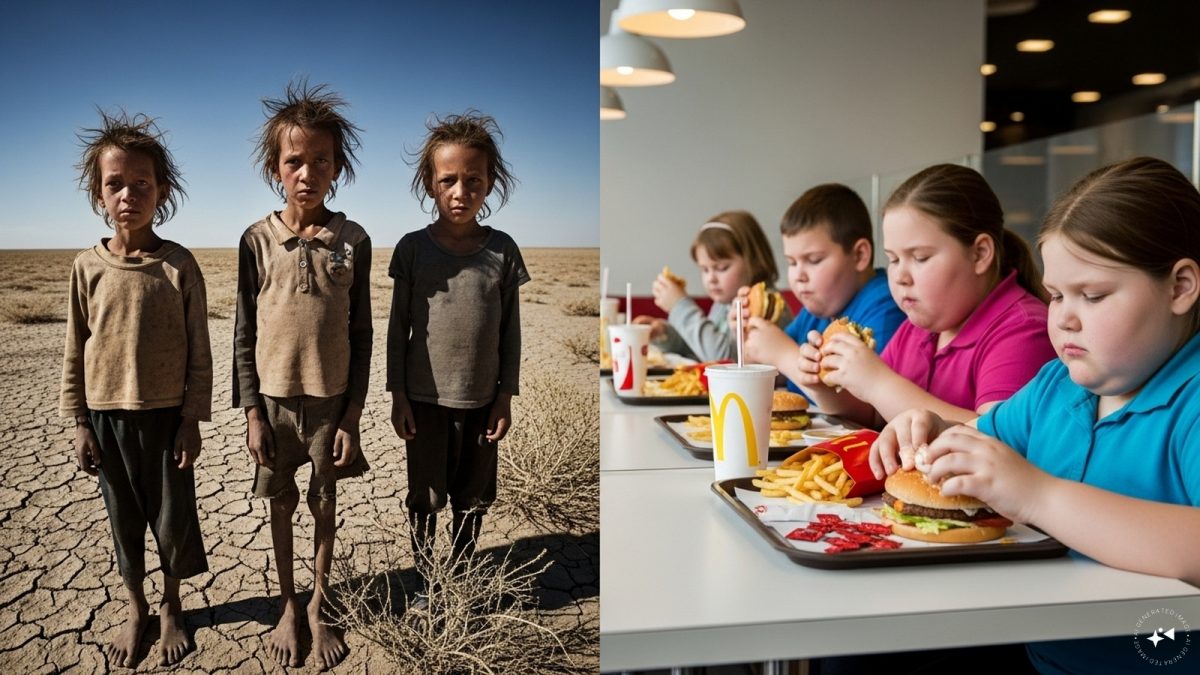For the first time in modern history, global childhood obesity has eclipsed underweight among school-aged children and adolescents, according to a new UNICEF report—marking a profound shift in the nature of child malnutrition.
UNICEF’s Feeding Profit: How Food Environments are Failing Children report reveals that over the last decades, the number of obese children aged 5–19 worldwide has soared—accelerating most rapidly in low- and middle-income countries.
UNICEF data reveal that in 2022, there were more than 155 million children between the ages of 5 and 19 classified as obese, compared to 148 million classified as underweight. This marks a new chapter in public health: undernutrition, once the dominant issue plaguing children, is now eclipsed by the growing problem of excessive weight.
The report cites unhealthy food environments, characterised by the dominance of ultra-processed foods in shops, schools, and through digital marketing—as a primary driver of this shift. These calorie-dense, nutrient-poor foods have largely replaced traditional diets, especially in countries where access to fresh, nutritious options remains limited
Henrietta Fore, UNICEF Executive Director, emphasized, “Now the world faces the double burden of malnutrition: children who are overweight or obese as well as those who are undernourished. Both can have dire, life-limiting consequences.” The rapid escalation is most evident in South-East Asia and Africa, where economic transitions are fuelling lifestyle and dietary changes.
The shift is attributed to a raft of factors that extend beyond individual choices. Globalization and the aggressive marketing of ultra-processed foods have made unhealthy products more affordable and accessible than ever before, especially in urban centres. Simultaneously, physical activity among school-age children is declining due to technological advancements and changes in built environments.
Impact Shorts
More ShortsUNICEF’s report highlights multiple health risks associated with childhood obesity, including higher likelihood of chronic diseases such as diabetes, hypertension, and heart disease during adolescence and later life. Equally, children who are underweight remain at risk of stunted growth, impaired immunity, and developmental delays.
The organisation calls for urgent action by policymakers and communities worldwide to tackle this dual crisis. Recommendations include stricter regulation of food marketing, taxation of sugary drinks, improving the nutritional quality of school meals, and expanding programs to support healthy lifestyle behaviours among both children and parents.
As global dietary landscapes shift, UNICEF highlights that the fight is not just about food access, but also food quality, equity, and an active policy effort to reverse both trends. The organization’s call to action is clear: only bold, coordinated steps can safeguard a generation from the lifelong consequences of malnutrition—whatever form it takes.
For the first time, the world’s schoolchildren are more at risk from excess than from want—a stark sign of the times and a pivotal challenge for policymakers everywhere.


)

)
)
)
)
)
)
)
)



